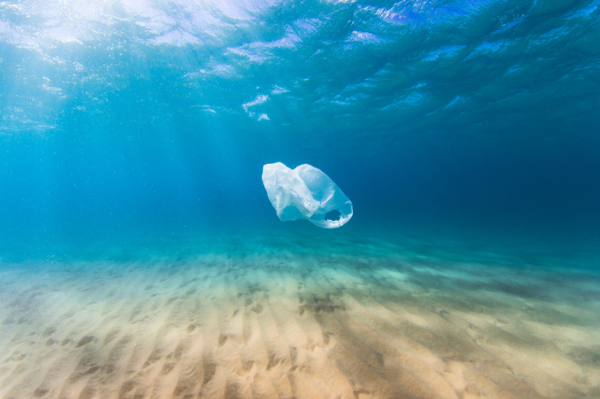Scoring a Goal for Latin America and the Caribbean in Plastic Pollution Talks
Key Proposals: The article offers an analysis of the interests of a multilateral negotiation of a binding treaty on plastic pollution from a regional point of view, that of the LAC. As this region is greatly affected by the effects of this pollution, the lack of international instruments in this area underlines the need to regulate the issue at a multilateral level.

Not just the world cup was in play at the beginning of December. In Punta del Este, Uruguay diplomats and experts from around the world have launched a two-year ambitious negotiation process towards an internationally legally binding instrument to end plastic pollution. Stakes are high for INC-1. The first five sessions of the Intergovernmental Negotiating Committee (INC)were expected to lay the foundation of a treaty that will define whether we live in a world where plastics improve our lives or make our planet unlivable.
1/ Framing Plastic pollution in the LAC region
Plastic is the most persistent pollutant that exists. It travels through air, land and sea freightage or using oceans, rivers and streams as mediums, affecting the environment, hampering efforts to tackle the nature and climate crisis along with the guarantee of human rights. It is a global problem with local implications requiring responses at different levels. Plastic production in LAC only accounts to about 4% percent of the total global production of plastic materials, which amounts to approximately 368 million metric tons. So, LAC does not contribute significantly to the plastic problem. It generates less than 12% of the global waste according to the Inter-American Development Bank (IADB) but bears a heavier brunt.
LAC is one of the most vulnerable regions to climate change. Greenhouse gas emissions from the plastic lifecycle affect meeting global climate targets. Plastics have a significant carbon footprint and emit 3.4% of global greenhouse gas emissions. About 8 million tons of plastic flow from rivers and beaches into the ocean every year and is forecast to triple by 2040. These plastics are broken down by waves and the sun into small microplastics (less than 5 mm). They transport absorbed persistent organic pollutants. Traces have been found in blood, clothing, migratory species and even in animals sampled from deep sea. Additionally, data from the Mesoamerican Reef shows that when plastic meets a reef, the coral is 20 times more likely to be afflicted by disease.
In addition, plastic is clogging landfills that poorly managed result in never ending fires that affect health and human rights of the poorest and most vulnerable communities that tend to live next to them. Along with human rights concerns, plastic pollution clearly raises social and environmental justice concerns.
2/ Towards a multilateral treaty on plastic pollution
To address ending plastic pollution in a fair and decisive way in the region, multilateralism and private investment are needed more than ever.
Scoring a goal towards ending plastic pollution is in the best interest of Latin America and the Caribbean and regional positioning is of essence. The stakes for the region are even higher, just like with climate change, it is more vulnerable and suffers greatly from the brunt effects without being a major culprit of plastic pollution. In LAC the need for effective governance to end plastic pollution is critical. The region must position itself and push to make it so.
The real challenge doesn’t lie in the creation of a treaty but one that can adapt to lessen the burden of future generations, is able to articulate existing frameworks, and achieve multi-stakeholder dialogue, especially with non-state actors.
A roadmap has been endorsed by 175 countries,[1] and effective treaty talks will require an objective viewpoint and not losing sight of the ball. Plastics have solved critical problems of humanity including by providing lifesaving medical solutions that have benefitted the region greatly. The challenge is not plastic, but rather plastic pollution and reaching a consensus on how to end it. In addition to the hazards posed to the marine and terrestrial environment as well as to humans, plastics are also a substantial contributor to global greenhouse gas emissions. The existing legal architecture to address these concerns is fragmented and piecemeal. There is not one single international treaty that deals exclusively with plastic pollution, there are at least nine Multilateral Environmental Agreements (MEAs), without counting regional instruments such as the Cartagena Convention,[2] that address different aspects of plastic pollution. One nation’s regulations do not prevent another nation’s waste from reaching its shores, as evidenced in the beaches from Yucatan to Santo Domingo. Generally, there are no uniform global standards or policies that guide the industry. Most strikingly, there is no common definition of biodegradable plastics. This has become an issue for multinational corporations selling in various countries. Some companies strongly support harmonizing definitions, reporting metrics, and methodologies that will simplify industry practices and improve management of waste. Despite some great advances at the regional and national level, the main problem remains reaching concerted action at the sectoral and the multilateral governance levels.
The Resolution establishing the INC provides a glimpse of what seems to be the framework and guide for treaty talks. Including elements such as financial mechanisms, the a secretariat; strengthening of the science-policy interface; taking effective and progressive actions at the local, regional, and global level among other. The scope that has been set up by countries for the projected instrument includes both binding and voluntary approaches. It is based on a comprehensive method that addresses the full lifecycle of plastic and considers the principles established by the Rio Conference on Environment and Development, as well as national circumstances and capabilities. The established roadmap does not aim for a cap or reduction in production, nor does it include a requirement that production numbers be reported along with other statistics. However, collection of production data represents the first step before any effective regulations could be written, and it’s a step that industry would like to avoid. In defining what the plastic lifecycle entails, negotiators opted to recommend a broader concept. The industry focused on waste management.
Several options have been laid on the table such as: potential elements; structure; key terms plastics science; existing funding; priorities, needs, challenges and barriers to end plastic pollution along with scientific and governance information that might assist negotiators. Thus, many questions persist, divergent views, and a plethora of interested parties from industry lobbying to make their views known and reflected – some to encourage, some to block.
Action is needed from multiple angles and at each stage of the plastic life cycle for real impact in LAC. The role of non-State Actors in different fronts must be reconsidered. In implementation and monitoring for effective reporting and verification rather than burdensome enforcement procedures or mechanisms, but more so on market opportunities and circular economy. Shifting to a circular economy including bio-based plastics is an important part of the solution to the plastic pollution challenge. However, the transition has been slow and requires significant investments in sustainable business models.
3/ The impact of the plastic market on the regulation of pollution
The global plastic market size was estimated at more than USD 609.01 billion in 2022. It is expected to expand at a compound annual growth rate (CAGR) of 3.7% from 2022 to 2030 reaching revenues of USD 811.57 billion. The increasing plastic consumption in the construction, automotive, packaging and electrical & electronics industries is projected to support market growth during the forecast period. For example, regulations to decrease gross vehicle weight to improve fuel efficiency and eventually reduce carbon emissions are driving plastic consumption as a substitute for metals, including aluminum and steel, for manufacturing automotive components. Regulation regarding depletion and recyclability of conventional materials -such as metal and wood- are anticipated to drive greater plastic demand from construction. Plastic has 85% less specific gravity compared to metals, enabling in the automotive and construction industries, approximately 80% weight savings and 30% to 50% cost savings in individual components.
A mere 4.5 % of the waste is recycled in LAC, significantly below the world average. To address plastic pollution effectively and fairly, multilateralism and private investment is needed more than ever.
Emerging markets in LAC have a role to play. The real challenge doesn’t lie in the creation of an international binding instrument but one that is able to articulate with other existing agreements and non-traditional plastic institutions as well as achieve multi-stakeholder dialogue, especially with non-state actors that can catalyze investment in the circular economy at scale.
[1] United Nations Environment Assembly of the United Nations Environment Programme, Resolution 5/14, “End plastic pollution: towards and international legally binding instrument”, Nairobi, Kenya, 28 February – 2 March 2022
[2] Convention for the Protection and Development of the Marine Environment of the Wider Caribbean Region


